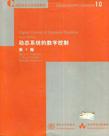动态系统的数字控制
出版时间:2001-9 出版社:清华大学出版社 作者:Gene F.Franklin 页数:742
Tag标签:无
前言
由G.F.Franklin,J.D.Powell和M.Worknan编著的“Digital Control of Dynamic Systems”一书初版于1980年,本书为第三版,出版于1998年。本书及前版本被国外许多大学用作本科生高年级或研究生的教材。该书是国际上关于计算机控制的一本权威性教材。随着计算机技术的迅速发展和应用的日益普及,越来越多的控制系统采用计算机进行控制。本书正是针对这种情况,着重对数字控制系统(即计算机控制系统)的分析、设计和建模等问题进行了系统的介绍。其中尤以较多篇幅讨论了数字控制系统的设计方法。同时对于一些实际问题,如采样周期的选择、量化效应的分析等也进行了深入的讨论,并且有单独一章及一个附录专门介绍数字控制的应用。本书注重理论联系实际,书中不仅给出理论的结果,而且给出实用的算法和对一些实际问题的考虑。同时引入了MATLAB作为计算机辅助设计控制系统的软件工具,从而使所介绍的理论和方法更易于被接受和应用。全书共分14章,第1章是概论,第2章对连续控制系统理论进行了简单的复习,第3章介绍了采样过程和离散化。第2章和第3章是该第3版新增加的内容,它主要是为本书所需先修内容作一简要介绍,为后续章节的学习打下了必要的基础。第4到第6章介绍离散和采样系统的基本分析方法,其中第4章介绍Z变换,第5章介绍采样数据系统,第6章讨论连续系统的近似离散等效。第7章到第9章介绍数字控制系统的各种设计方法,这一部分是全书的重点。其中第7章介绍基于数学变换的经典设计方法,第8章介绍基于状态空间的极点配置设计方法,第9章介绍多变量系统的二次型最优控制。第10章和第11章介绍计算机控制系统所特有的一些实际问题,其中第10章分析量化效应,第11章讨论采样周期的选择。第12章讨论数字控制系统的建模问题,介绍了系统辨识和参数估计。第13章简要介绍了非线性控制的有关问题。第14章介绍了磁盘驱动器的伺服控制设计,以作为数字控制系统的一个典型应用。附录中还给出了应用举例、Z变换表、矩阵变换和运算、随机过程及Matlab函数等基本材料,以备查用。本书每章后面均有总结和习题,以帮助读者抓住每章的知识要点和巩固所学的内容。本书内容丰富、取材适当,兼顾了系统性、先进性和实用性等方面的要求。该书可作为与控制工程相关各专业的研究生或高年级本科生的教材或参考书。
内容概要
《动态系统的数字控制》是国际上关于计算机控制的一本权威性教材。全书共分14章,内容包括概论、连续控制系统理论、采样过程和离散化、Z变换、采样数据系统、连续系统的近似离散等效、基于数学变换的经典设计方法、基于状态空间的极点配置设计方法、多变量系统的二次型最优控制、量化效应、采样周期的选择、数字控制系统的建模问题、数字控制系统的各种设计方法、变量系统的二次型最优控制、采样周期的选择、非线性控制的有关问题,以及数字控制系统的一个典型应用——磁盘驱动器的伺服控制设计等。附录中还给出了应用举例、Z变换表、矩阵变换和运算、随机过程及Matlab函数等基本材料。每章后面均有总结和习题。 《动态系统的数字控制》注重理论联系实际,书中不仅给出理论的结果,而且给出实用的算法和对一些实际问题的考虑。同时引入了MATLAB作为计算机辅助设计控制系统的软件工具,从而使所介绍的理论和方法更易于被接受和应用。本可作为控制工程及相关专业的研究生或高年级本科生的教材或参考书。
作者简介
作者:(美国)Gene F.Franklin (美国)J.David Powell
书籍目录
Preface xix1 Introduction 1.1 Problem Definition1.2 Overview of Design Approach 1.3 Computer-Aided Design 1.4 Suggestions for Further Reading 1.5 Summary 1.6 Problems2 Review of Continuous Control 2.1 Dynamic Response 2.1.1 Differential Equations 2.l.2 Laplace Transforms and Transfer Functions2.1.3 Output Time Histories 2.1.4 The Final Value Theorem 2.1.5 Block Diagrams 2.1.6 Response versus Pole Locations 2.1.7 Time-Domain Specifications 2.2 Basic Properties of Feedback 2.2.1 Stability2.2.2 Steady-State Errors2.2.3 PID Control2.3 Root Locus2.3.1 Problem Definition2.3.2 Root Locus Drawing Rules2.3.3 Computer-Aided Loci2.4 Frequency Response Design2.4.1 Specifications2.4.2 Bode Plot Techniques2.4.3 Steady-State Errors2.4.4 Stability Margins2.4.5 Bode’s Gain-Phase Relationship2.4.6 Design2.5 Compensation2.6 State-Space Design2.6.1 Control Law2.6.2 Estimator Design2.6.3 Compensation: Combined Control and Estimation2.6.4 Reference Input2.6.5 Integral Control2.7 Summary2.8 Problems 3 Introductory Digital Control3.1 Digitization3.2 Effect of Sampling3.3 PID Control3.4 Summary3.5 Problems4 Discrete Systems Analysis4.1 Linear Difference Equations4.2 The Discrete Transfer Function4.2.1 The z-Transform4.2.2 The Transfer Function4.2.3 Block Diagrams and State-Variable Descriptions4.2.4 Relation of Transfer Function to Pulse Response4.2.5 External Stability4.3 Discrete Models of Sampled-Data Systems4.3.1 Using the z-Transform4.3.2 *Continuous Time Delay4.3.3 State-Space Form4.3.4 *State-Space Models for Systems with Delay4.3.5 *Numerical Considerations in Computing ?and ?4.3.6 *Nonlinear Models4.4 Signal Analysis and Dynamic Response4.4.1 The Unit Pulse4.4.2 The Unit Step4.4.3 Exponential4.4.4 General Sinusoid4.4.5 Correspondence with Continuous Signals4.4.6 Step Response4.5 Frequency Response4.5.1 *The Discrete Fourier Transform (DFT)4.6 Properties of the z-Transform4.6.1 Essential Properties4.6.2 *Convergence of z-Transform4.6.3 *Another Derivation of the Transfer Function4.7 Summary4.8 Problems5 Sampled-Data Systems5.1 Analysis of the Sample and Hold5.2 Spectrum of a Sampled Signal5.3 Data Extrapolation5.4 Block-Diagram Analysis of Sampled-Data Systems5.5 Calculating the System Output Between Samples: The Ripple5.6 Summary5.7 Problems5.8 Appendix 6 Discrete Equivalents6.l Design of Discrete Equivalents via Numerical Integration6.2 Zero-Pole Matching Equivalents6.3 Hold Equivalents6.3.1 Zero-Order Hold Equivalent6.3.2 A Non-Causal First-Order-Hold Equivalent The Triangle-Hold Equivalent6.4 Summary6.5 Problems7 Design Using Transform Techniques7.1 System Specifications7.2 Design by Emulation7.2.1 Discrete Equivalent Controllers7.2.2 Evaluation of the Design7.3 Direct Design by Root Locus in the z-Plane7.3.1 z-Plane Specifications7.3.2 The Discrete Root Locus7.4 Frequency Response Methods7.4.1 Nyquist Stability Criterion7.4.2 Design Specifications in the Frequency Domain7.4.3 Low Frequency Gains and Error Coefficents7.4.4 Compensator Design7.5 Direct Design Method of Ragazzini7.6 Summary7.7 Problems8 Design Using State-Space Methods8.1 Control Law Design8.1.1 Pole Placement8.1.2 Controllability8.1.3 Pole Placement Using CACSD8.2 Estimator Design8.2.1 Prediction Estimators8.2.2 Observability8.2.3 Pole Placement Using CACSD8.2.4 Current Estimators8.2.5 Reduced-Order Estimators8.3 Regulator Design: Combined Control Law and Estimator8.3.1 The Separation Principle8.3.2 Guidelines for Pole Placement8.4 Introduction of the Reference Input8.4.1 Reference Inputs for Full-State Feedback8.4.2 Reference Inputs with Estimators: The State-Command Structure8.4.3 Output Error Command8.4.4 A Comparison of the Estimator Structure and Classical Methods8.5 Integral Control and Disturbance Estimation8.5.1 Integral Control by State Augmentation8.5.2 Disturbance Estimation8.6 Effect of Delays8.6.l Sensor Delays8.6.2 Actuator Delays8.7 *Controllability and Observability8.8 Summary8.9 Problems9 Multivariable and Optimal Control9.1 Decoupling 9.2 Time-Varying Optimal Control9.3 LQR Steady-State Optimal Control9.3.1 Reciprocal Root Properties9.3.2 Symmetric Root Locus9.3.3 Eigenvector Decomposition9.3.4 Cost Equivalents9.3.5 Emulation by Equivalent Cost9.4 Optimal Estimation9.4.1 Least-5quares Estimation9.4.2 The Kalman Filter9.4.3 Steady-State Optimal Estimation9.4.4 Noise Matrices and Discrete Equivalents9.5 Multivariable Control Design9.5.1 Selection of Weighting Matrices Q1 and Q29.5.2 Pincer Procedure 9.5.3 Paper-Machine Design Example9.5.4 Magnetic-Tape-Drive Design Example9.6 Summary9.7 Problems10 Quantization Effects10.1 Analysis of Round-Off Error10.2 Effects of Parameter Round-Off10.3 Limit Cycles and Dither10.4 Summary10.5 Problems11 Sample Rate Selection11.1 The Sampling Theorem’s Limit11.2 Time Response and Smoothness11.3 Errors Due to Random Plant Disturbances11.4 Sensitivity to Parameter Variations11.5 Measurement Noise and Antialiasing Filters11.6 Multirate Sampling11.7 Summary11.8 Problems12 system Identification13 Nonlinear Control14 Design of a disk drive servo:A case study Appendix A Examples Appendix B TablesAppendix C A few results from matrix analysisAppendix D summary of facts from the theory of probabilityAppendix E matlab functionsAppendix F Differences between matlab v5 and v4referencesindex
章节摘录
插图:
编辑推荐
《动态系统的数字控制》对数字控制系统(即计算机控制系统)的分析、设计和建模等问题进行了系统的介绍。其中尤以较多篇幅讨论了数字控制系统的设计方法,同时对于一些实际问题,如采样周期的选择、量化效应的分析等也进行了深入的讨论,并且有单独一章 及一个附录专门介绍数字控制的应用。《动态系统的数字控制》注重理论联系实际,书中不仅给出理论结果,而且给出实用的算法和对一些实际问题的考虑。同时引入Matlab作为计算机辅助设计控制系统的软件工具,从而使所介绍的理论和方法更易于接受和应用。《动态系统的数字控制》内容丰富、取材适当,兼顾了系统性、先进性和实用性等方面的要求。该书可作为与控制工程相关各专业的研究生或高年级本科生的教材或参考书。
图书封面
图书标签Tags
无
评论、评分、阅读与下载
用户评论 (总计5条)
- 质量一般般,内容反正都差不多
- 由于是影印版,价格嘛比较低,一分钱,一分货,不能要求太多,纸张质量不是非常好;快递过来的时候包装有点少,书有点擦破皮。。。
- 我满意因为通过比较合适的价格买了我需要的书。对一个学生来说这个很重要。而且送货的时间不长。付钱的方式比较灵活。
- 书不错,内容也挺好,正在研读中。
- 理论联系工程实际,真正的深入浅出,一本难得的好书,推荐!
推荐图书
- Mastercam8铣削/车削应用指南
- 清华大学博士生入学考试词汇训练
- 清华国学研究院史话
- 冷冲模具设计
- 知识发现
- 酵母遗传实验方法 冷泉港实验课手册
- 生物序列分析,蛋白质的核酸的概率论模型
- HSK汉语水平考试词汇自测手册
- 激励理论
- 儿童创意画教程
- 当代国际商务英语教程
- 20世纪美国重要历史文献导读
- 知识与发展
- 中国古代文化故事(第二辑)
- 中国古代风俗故事(第二辑)
- 从 C++、Java 到 C#
- Microsoft Word 2002标准教程(中国)
- Microsoft FrontPage 2002标准教程(中国)
- C#探索指南
- 美国好莱坞与现代音乐
- 美国百老汇与流行艺术
- 文学史的权力
- 初级法语口语教程
- 20世纪外国文学专题
- 当代西欧工人阶级
